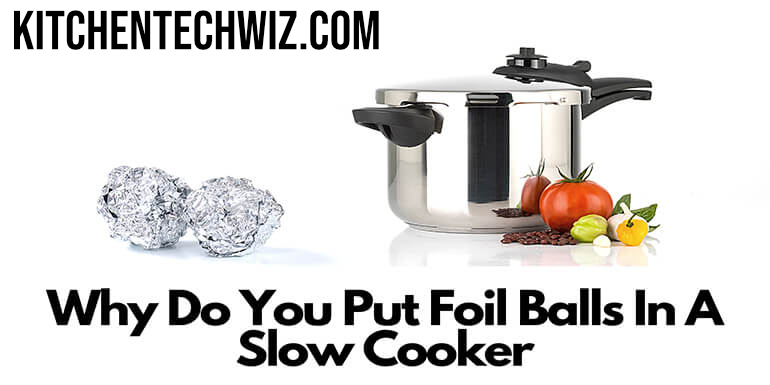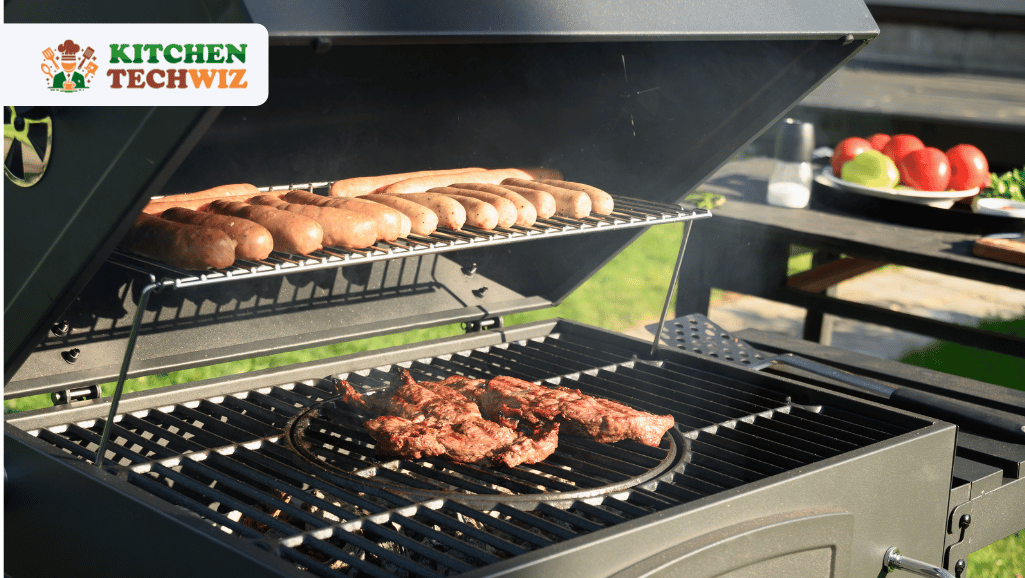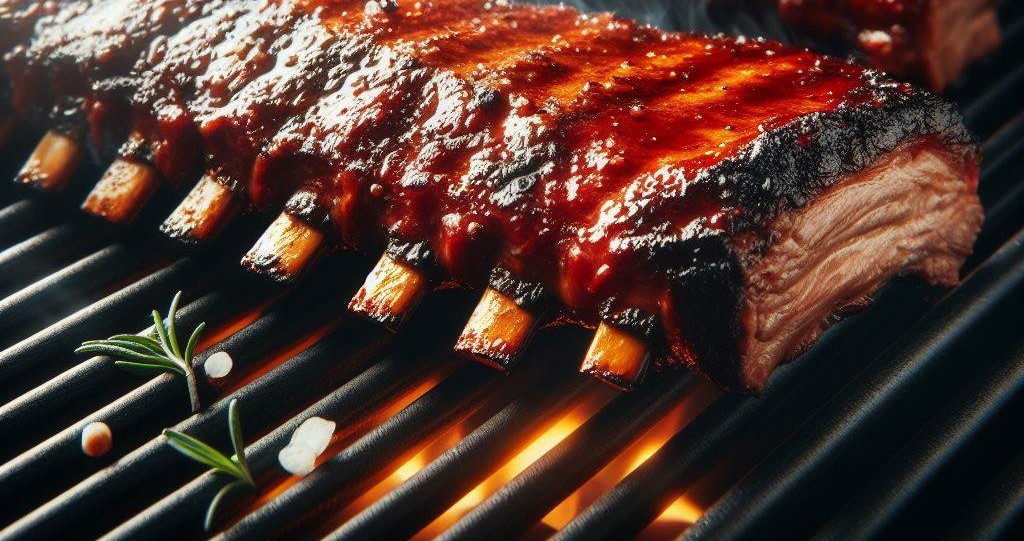Are you a fan of slow-cooking meals but have always wondered about those mysterious foil balls that some recipes call for? You’re not alone. Many home chefs have puzzled over the purpose of these shiny orbs nestled amidst their savory stews and succulent roasts. But fear not, for today we are delving into the intriguing world of slow cooking and uncovering the secrets behind why those foil balls are an essential tool for culinary success.
Ever wondered why do you put foil balls in a slow cooker? What purpose do these balls serve? This article intends to answer these questions and more.
Almost every kitchen counter has an aluminum foil. The benefits of foil balls go beyond wrapping food and lining baking tins in the kitchen. It’s a multipurpose tool that can help wrap leftovers, prepare meals and bake in the oven.
Most people do not understand why we have to use foil balls in slow cookers. Of course, it’s vital to have them in your slow cooker so that you end up with a well-cooked meal.
In a minute, we will show you a few reasons why you should use foil balls in a slow cooker.
Why Do You Put Foil Balls In A Slow Cooker?
When you use a slow cooker, you often find yourself with a cleanup problem when food gets stuck on the cooker. Some of these bake-on foods are difficult to remove and make cleanup difficult. This is where aluminum foil balls really come in handy. You want to know how? Keep reading for more information.
The best way to cut down on cleanup time with a slow cooker is using foil balls. By putting foil balls in a slow cooker, you create a barrier between the food and the cooker.
The foil balls also act as a food raiser or rack. This is especially important when you need to prevent the food from coming into contact with the cooker’s base. The water content and excess oil will drop away.
Simply fold up aluminum foil into small balls. Arrange them on the base of the slow cooker and put your meal over them. We love to use foil balls when cooking chicken, fish, and other foods that discharge liquid while cooking.
Is It Safe To Use Aluminum Balls In A Slow Cooker?
Are your aluminum foil balls in your slow cooker safe? Many people have concerns about toxic emissions. For well over 100 years, aluminum foil has been used in the US and other parts of the world. People in the US first used it in 1913 to wrap gums, candy bars and Life Savers. Of late, researchers are beginning to question the safety of nearly everything, including aluminum foil. Let’s explore this in depth. What does the research say?
What Is Aluminum Foil Made Of?
Aluminum foil is made of 98% aluminum and less than 1.5% steel rollers. It is produced by rolling molten aluminum until the desired thickness is achieved. Aluminum is one of the cheapest and naturally abundant metals on earth. It is also found in small amounts in dairy products, grains, meats, fish, vegetables, and fruits. It’s used as an anti-caking ingredient in powders and emulsifying agent in processed foods.
It’s worth noting that aluminum isn’t a nutrient. Unlike other metals such as iron and zinc, aluminum doesn’t have any nutritional value. It’s only used in food additives as preservatives.
Is Aluminum Exposure Through Food Safe?
Mercury, arsenic, cadmium, and lead are well-known toxic metals found in the Earth’s Crust. What about aluminum? Is it really safe? Well, dozens of studies and reports have come up with inconsistent conclusions.
Some traces of aluminum indeed leaches into food when used in slow cookers or any other type of cookware. This is especially true when acidic food such as citrus and tomatoes come into contact with aluminum foil.
The good news is that the FDA has found aluminum foil to be relatively safe in the culinary preparation of different foods. However, the FDA has not ruled out the risk of aluminum toxicity. That’s why they’ve a set a safe limit, which we shall discuss in the article below. But before that, let’s look at some of the common myths about aluminum.
1. Aluminum Can Cause Alzheimer
One burning question that has always come up is whether exposure to aluminum contributes to dementia or memory loss. A certain controversial study found out that consumption of aluminum might lead to Alzheimer’s disease. The researchers claimed to have found traces of aluminum in the brain of several people with Alzheimer’s disease.
However, more research done by medical experts found no strong link between aluminum and Alzheimer’s.
Neither the European Food Safety Authority nor the FDA has considered aluminum foil unsafe for wrapping and cooking food.
The body can only absorb less than one percent of aluminum in food or water. The kidney clears almost all of it within 24 hours.
Although experts haven’t rule out a possibility of aluminum causing this condition, they don’t recommend people to stop using aluminum foil.
2.Aluminum Causes Cancer
Studies show that the human skin cannot absorb aluminum. Experts have also found no link between aluminum and cancer. So the claim that aluminum causes cancer is rated as false by medical researchers.
FAQ About Foil Balls & Slow Cooker
How to minimize your exposure to aluminum when cooking?
It is not possible to completely get rid of aluminum from your food when cooking. But there are a few ways to minimize it.
What’s The Safe Threshold for Aluminum Exposure?
According to FDA and World Health Organization (WHO), consuming less than 2 mg per 1 KG body weight per week is relatively safe. The European Food Safety Authority recommends 1 mg per 1 kg of body weight per week. It’s unlikely one to consume more than this in a week.
Here are a few ways to reduce your exposure to aluminum when cooking:
Avoid high-temperature cooking. Do not cook foods that require high heat with aluminum foil balls.
Minimize or avoid using it with acidic foods like citrus fruits and tomato sources.
How to Use Foil Balls in a Slow Cooker?
Make small balls using aluminum foil and put them on the bottom of your slow cooker. These balls will act as a rack so that your food doesn’t come into contact with the bottom of your cooker. The balls do a great job of ensuring food doesn’t get stuck on your cookware.
Place your food, such as chicken or meat, on top of the foil balls. Cover the cooker with a lid and slow cook it until you achieve your desired results.
Carefully remove the food from the slow cooker
Conclusion
Aluminum is the most plentiful metal on earth, and foil balls have many applications. Many people use foil balls in slow cookers to serve as a rack for food. For example, if you are cooking chicken, you need to place foil balls at the bottom of the cooker. This way, the food won’t cook in the liquid that accumulates at the bottom of the cooker.
Also, the balls prevent the chicken from getting into contact with the cooker. You won’t have to deal with a complicated cleanup process at the end of the day.
Regarding the safety of aluminum foil balls, experts agree that aluminum is pretty safe. It’s considered nontoxic. Even if you ingest traces of it, the body will excrete it in the urine and feces.
Enhancing slow cooker performance through the use of foil balls can significantly improve cooking results. By creating a barrier between the direct heat source and the food, foil balls help distribute heat more evenly, prevent burning, and reduce moisture loss. This simple yet effective technique can elevate the quality of your slow-cooked meals and ensure that your dishes are cooked to perfection every time.



![16 Best Tabletop Propane Gas Grills 2024: [Also Charcoal & Electric]](https://kitchentechwiz.com/wp-content/uploads/2021/04/Best-Tabletop-Propane-Grill-1.jpg)

Leave a Reply